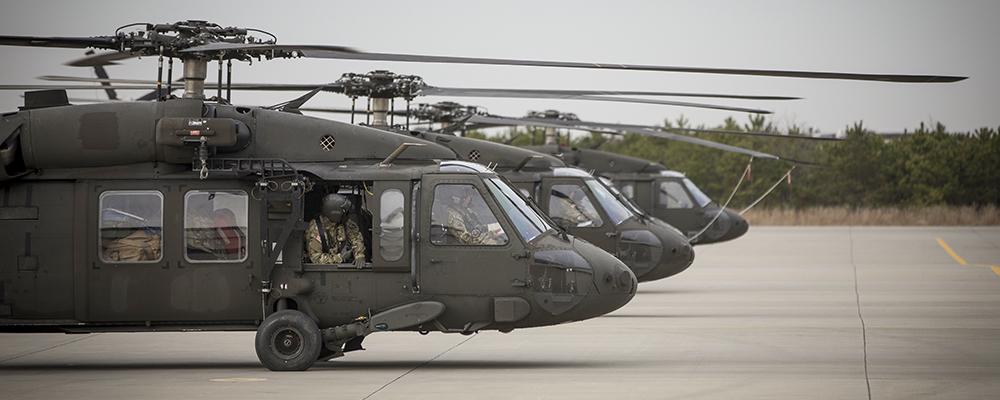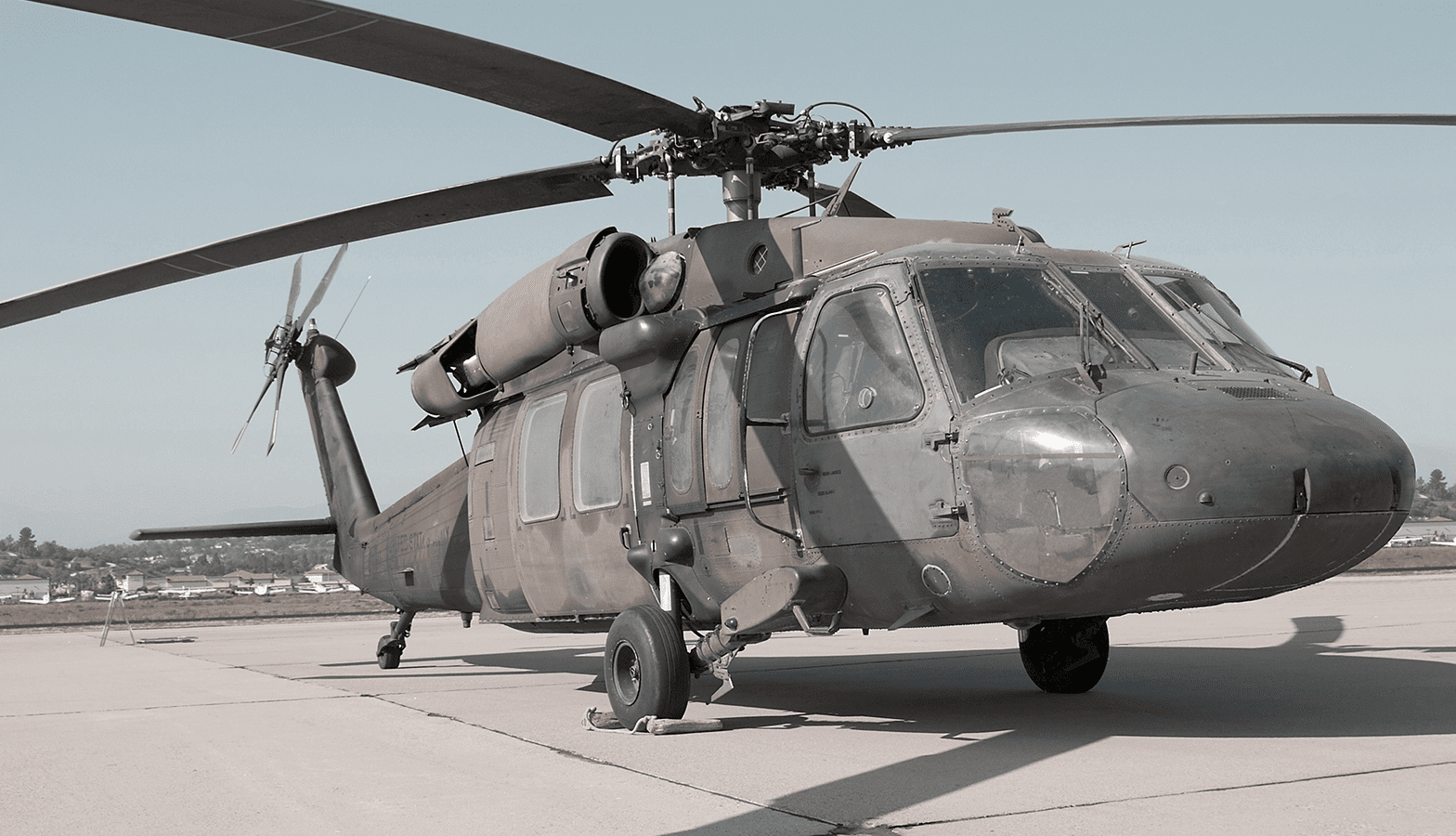Everything You Need to Know About the UH 60 Helicopter and Its Capabilities
Whatever You Required to Learn About the UH 60 Helicopter
The UH-60 helicopter, a cornerstone of U.S. Military aeronautics considering that its launching in 1979, stands for an exceptional blend of design and operational convenience. As military requirements progress, so too does the helicopter, with ongoing improvements intended at enhancing its capabilities and integrating contemporary innovations.
History of the UH-60
Created in the late 1970s, the UH-60 Black Hawk helicopter emerged as a response to the U.S. Army's requirement for a versatile utility helicopter that could carry out a selection of objectives under challenging conditions. The inspiration for its layout was the imperfections determined in the earlier helicopters utilized during the Vietnam War, particularly in regards to rate, survivability, and maneuverability.
The Black Hawk was made by Sikorsky Aircraft, including advanced innovations and products to boost its efficiency and longevity. It was formally introduced into service in 1979, swiftly coming to be an important possession for military operations - uh 60. Its capacity to transfer troops, clinical discharge, and logistical assistance in both battle and humanitarian goals made the Black Hawk an important component of the U.S. Military's aviation fleet
Throughout the years, the UH-60 has been continually updated, adjusting to the transforming nature of war and the advancing requirements of modern-day army operations. Its operational history consists of involvement in significant problems, peacekeeping missions, and catastrophe relief initiatives, solidifying its reputation as a effective and dependable helicopter in different environments worldwide.

Style and Specs
The design of the UH-60 Black Hawk helicopter continually shows a commitment to functional performance and convenience. Created by Sikorsky Aircraft, this medium-lift energy helicopter features a smooth, wind resistant body that boosts speed and ability to move. Its tandem blades system, characterized by 2 counter-rotating blades, lessens resonance and enhances lift ability, permitting safer procedures in diverse environments.
The UH-60 is powered by 2 T700-GE-701C turboshaft engines, supplying a maximum speed of around 180 knots and a series of around 400 maritime miles. Its durable airframe is constructed from sophisticated composite products, ensuring toughness while preserving a fairly reduced weight. The helicopter has a maximum gross weight of about 22,000 extra pounds, sustaining a versatile haul configuration.

Objectives and duties
A versatile system, the UH-60 Black Hawk helicopter serves a multitude of duties and missions within armed forces operations. Designed mostly for troop transportation, it is qualified of lugging approximately 11 soldiers, making it a vital asset for rapid release and logistical assistance.
In enhancement to troop transport, the UH-60 stands out in clinical evacuation (MEDEVAC) missions, equipped with innovative medical devices to offer vital treatment during transportation. Its capability to operate in diverse settings improves its effectiveness in battle search and rescue (CSAR) operations, where quick extraction of employees is important.
The helicopter also plays a significant role in reconnaissance and security goals, utilizing onboard sensors and equipment to debrief. Its versatility prolongs to logistical assistance, qualified of moving materials and devices to forward running bases.
In combat procedures, the UH-60 can be equipped with various weapon systems, enabling it to offer close air assistance. Its multi-role capacity makes the Black Hawk a vital tool for modern military pressures, adapting perfectly to the advancing needs of field of battle scenarios and guaranteeing goal success across a variety of functional contexts.
Efficiency and Abilities
Understood for its robust performance, the UH-60 Black Hawk helicopter boasts outstanding abilities that improve its functional performance across different goals. uh 60. This multi-role aircraft is furnished with effective twin-engine Turbomeca Arriel 1D1 engines, supplying phenomenal rate and maneuverability, with an optimum cruise ship rate of approximately 150 knots and an operational variety of around 400 nautical miles
The Black Hawk's sophisticated avionics and fly-by-wire control systems dramatically boost flight security and handling, enabling it to run in varied atmospheres, including damaging weather. Its flexibility is additional exemplified by its capacity to bring as much as 11 totally furnished troops or a payload of approximately 8,000 extra pounds, making it ideal for troop transport, clinical visit this web-site emptying, and logistical assistance missions.
In Addition, the UH-60 is created for survivability, including reinforced airframes, ballistic security for staff and travelers, and progressed countermeasure systems to escape threats. The helicopter's dexterity and speed, incorporated with its ability for fast deployment, make it an indispensable possession in contemporary armed forces operations, making certain that it remains a crucial element of tactical air assistance and battleground flexibility.
Future Developments

One considerable emphasis is the combination of advanced avionics systems, which will certainly boost situational understanding with boosted navigating and interaction capabilities. This includes the possible use man-made intelligence to help pilots in decision-making and mission preparation.
Additionally, future variants may include advanced materials and design attributes to boost the helicopter's toughness and lower its radar signature, enhancing survivability in contested settings.
The introduction of hybrid-electric propulsion systems is also imminent, intending to enhance fuel efficiency and lower logistical worries. Such innovations might expand operational range and lower the helicopter's environmental footprint.

Final Thought
The UH-60 helicopter stands for a substantial advancement in armed forces aeronautics considering that go to this site its intro in 1979. The UH-60's sustaining existence highlights its important role in modern-day military procedures and highlights the ongoing evolution of military aviation modern technology.
The UH-60 helicopter, a cornerstone of United state Army air travel because its debut in 1979, stands for an exceptional blend of design and functional flexibility. As army demands advance, so as well does the helicopter, with continuous developments intended at enhancing its capabilities and incorporating modern innovations.The style of the UH-60 Black Hawk helicopter consistently reflects a commitment to operational efficiency and flexibility. Developed by Sikorsky Airplane, this medium-lift utility helicopter features a smooth, wind resistant body that boosts rate and maneuverability.The UH-60 helicopter represents a considerable development in military aeronautics considering that its introduction in 1979.